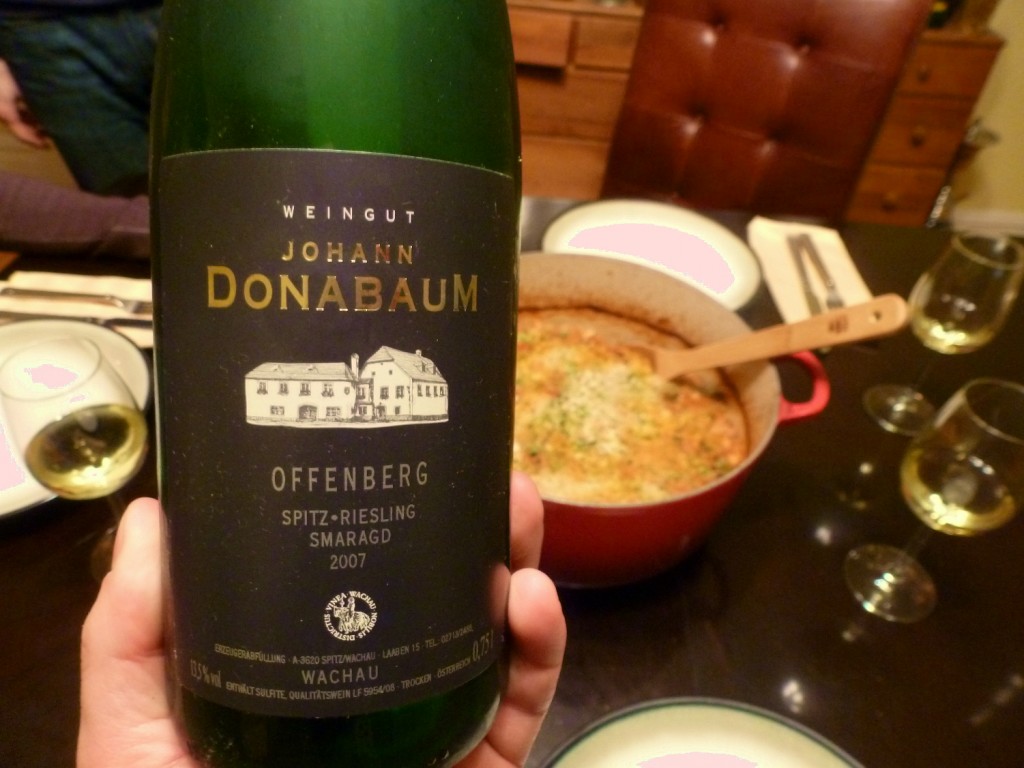Austria’s Little Green Lizard
 Riesling remains relatively unpopular in this country, and I must admit even I can sometimes be peremptorily dismissive of a glass of this variety myself. A lot of us associate the grape with cheap, sweet, insipid wines like Blue Nun and Liebfraumilch, and so when we drink a Riesling, even a very good one, it can be easy to just quaff it without paying attention.
Riesling remains relatively unpopular in this country, and I must admit even I can sometimes be peremptorily dismissive of a glass of this variety myself. A lot of us associate the grape with cheap, sweet, insipid wines like Blue Nun and Liebfraumilch, and so when we drink a Riesling, even a very good one, it can be easy to just quaff it without paying attention.
It took me a while to learn this lesson: Pay Attention. There is a reason The Oxford Companion to Wine calls Riesling “arguably the world’s most undervalued…grape.”
Riesling is almost synonymous with German wine, but these days Austria produces some delightful expressions of this variety. In fact, Austrian wine has some of the strictest controls and regulations anywhere in the world, ensuring that when you get a Qualitätswein, Kabinett, Spätlese or Auslese, you are getting exactly the ripeness you expect and nothing less. (Listed in ascending order, these categories indicate the level of ripeness of the grapes at the time they are harvested.)
Just to keep things interesting, the Wachau Valley, Austria’s most famous wine region — and one of its very smallest, with only 3% of the country’s vineyards — eschews this system in favor of homegrown categories based on a wine’s alcohol content. The World Atlas of Wine explains this rather quirky (but thankfully simple) system:
Steinfelder is a light wine up to 11% alcohol for easy drinking. Federspiel is made from slightly riper grapes, 11.5-12.5% (stronger than it used to be), good in its first five years. Wines labelled Smaragd (after a local green lizard), can be seriously full-bodied, with alcohol levels above — often far above — 12.5%; they repay six or more years’ ageing.
We recently partook of the little green lizard, a 2007 Johann Donabaum Offenberg Riesling Smaragd. Johann Donabaum calls Offenberg its “most extreme [vineyard] location,” and goes on to explain how wines from this site, set a bit inland from the Danube, have a strong sense of terroir, particularly because of the soil’s slate content.
We opened the Riesling with a meal of cassoulet, a wonderful French stew of white beans and meat topped with a crunchy crust of butter-infused breadcrumbs. I love cassoulet with lardon, garlic sausage, rabbit and duck confit, but I made a simpler version substituting bacon, kielbasa, ground pork and braised chicken thighs. Still delicious, and ever so much easier. I hoped the Riesling could stand up to this rather robust stew.





